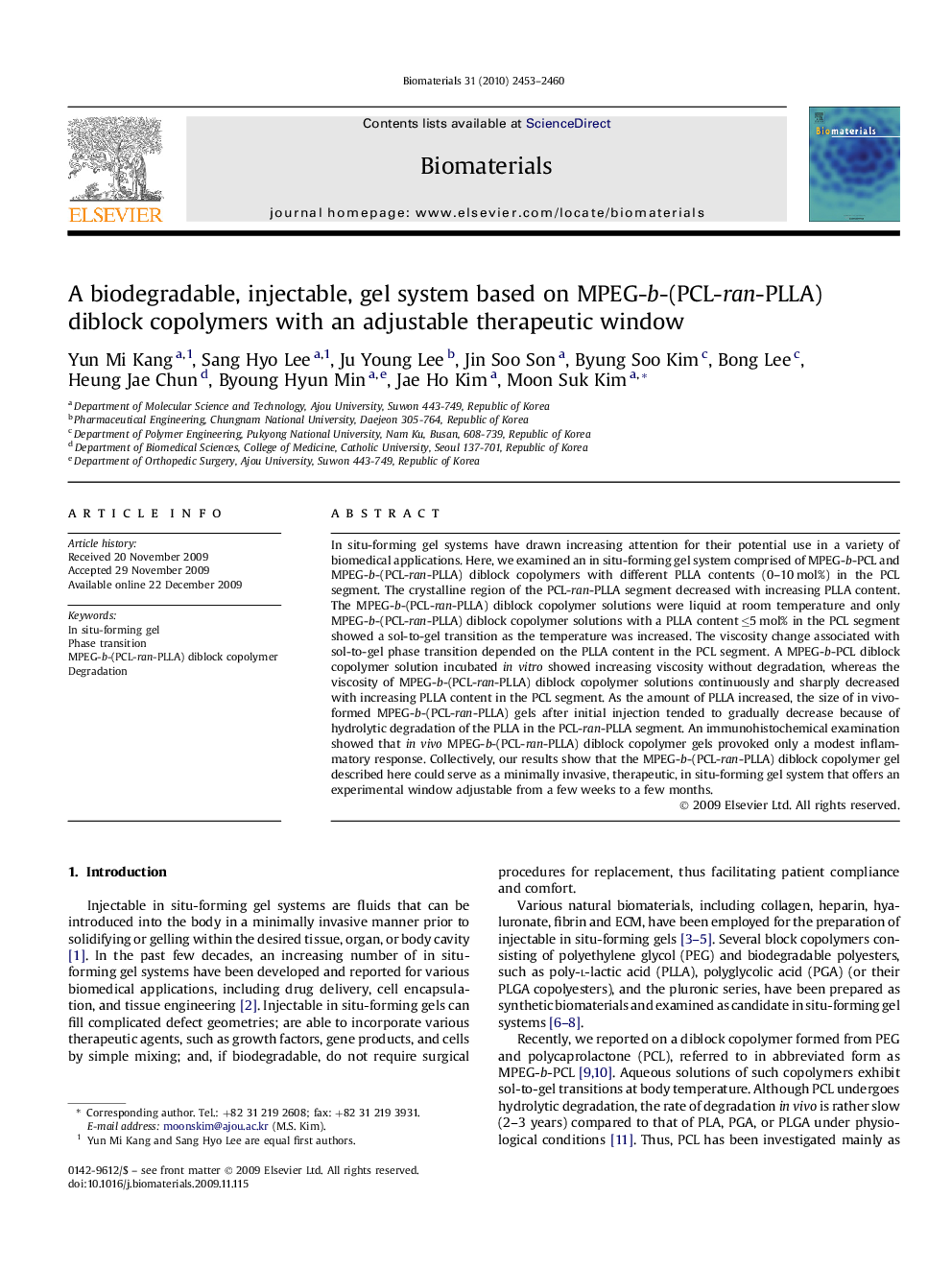| Article ID | Journal | Published Year | Pages | File Type |
|---|---|---|---|---|
| 8454 | Biomaterials | 2010 | 8 Pages |
In situ-forming gel systems have drawn increasing attention for their potential use in a variety of biomedical applications. Here, we examined an in situ-forming gel system comprised of MPEG-b-PCL and MPEG-b-(PCL-ran-PLLA) diblock copolymers with different PLLA contents (0–10 mol%) in the PCL segment. The crystalline region of the PCL-ran-PLLA segment decreased with increasing PLLA content. The MPEG-b-(PCL-ran-PLLA) diblock copolymer solutions were liquid at room temperature and only MPEG-b-(PCL-ran-PLLA) diblock copolymer solutions with a PLLA content ≤5 mol% in the PCL segment showed a sol-to-gel transition as the temperature was increased. The viscosity change associated with sol-to-gel phase transition depended on the PLLA content in the PCL segment. A MPEG-b-PCL diblock copolymer solution incubated in vitro showed increasing viscosity without degradation, whereas the viscosity of MPEG-b-(PCL-ran-PLLA) diblock copolymer solutions continuously and sharply decreased with increasing PLLA content in the PCL segment. As the amount of PLLA increased, the size of in vivo-formed MPEG-b-(PCL-ran-PLLA) gels after initial injection tended to gradually decrease because of hydrolytic degradation of the PLLA in the PCL-ran-PLLA segment. An immunohistochemical examination showed that in vivo MPEG-b-(PCL-ran-PLLA) diblock copolymer gels provoked only a modest inflammatory response. Collectively, our results show that the MPEG-b-(PCL-ran-PLLA) diblock copolymer gel described here could serve as a minimally invasive, therapeutic, in situ-forming gel system that offers an experimental window adjustable from a few weeks to a few months.
